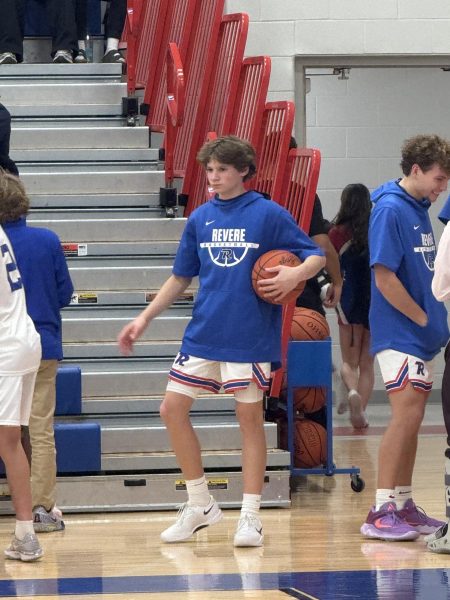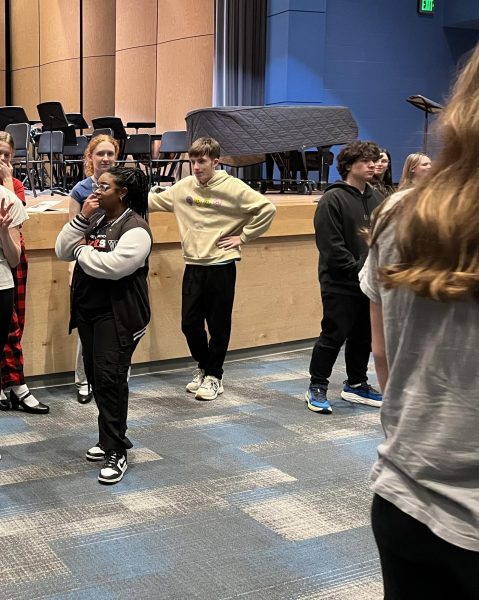Winter weather provides challenges for schools
Revere Local School district is facing an increasingly common problem, having already met its snow day limit in the middle of the worst winter Northeastern Ohio has seen in years.
As of Wednesday, February 5, Revere charted its fifth snow day in just two months, reaching the maximum limit set by Ohio law. Revere Superintendent Randy Boroff explained the factors taken into consideration when deciding whether or not to have a snow day.
“There are a number of things that I consider in the morning or the afternoon in some cases. [I look at] the snowfall, the safety of the roads, whether our buses will be safe, [and] whether our kids will be safe going to bus stops. [I also look at] the forecast, which can sometimes be hard to count on … [I consider] the cold [as well]. When it approaches negative twenty degrees [Fahrenheit], [then] that is something we are very concerned about. [I also consider] child care; we try to make sure that the decision is made early enough that people can make arrangements for their children. All of that goes into play when we make the decision, which can be within the hour in the morning. It’s a very hard decision to make, but the focus is on the safety of the kids, the staff and the bus drivers,” Boroff said.
Boroff receives feedback from many different sources before choosing to close school, including Revere’s snow-plowing company and the superintendents of neighboring school districts. Another consultant is Richfield Service Director Melanie Baker, who supervises the treatment and plowing of the roads in and around the village. She spoke of her contribution to Boroff’s early-morning decisions.
“My job [starts] at around 4 A.M. I’m calling my crews and my trucks to see what they’re seeing: how much snow is falling per hour? Is it something we’re going to be able to keep up with? Are we not going to be able to have the streets cleared in time? We take all of that information into consideration, and I make the call to the superintendent and relay to him what the street conditions are, what our anticipated time is to get it cleaned up, and whether or not we think we can get it to where school can take place,” Baker said.
Ohio law currently states that students must attend at least 178 days of school per year, of which snow days do not count. A district that goes past the five-day limit must make up the extra days in June, where they are added on at the end of the school year. In order to circumvent the extension, however, some districts are enacting a new “blizzard bag” policy, in which students receive work from their teachers to complete at home. Revere tested the new policy on their most recent snow day. Boroff explained the new program.
“In preparation for another snow day, I asked all the principals [in the district] to make announcements and get notice out to staff to assign some homework if in fact we had a snow day, so that there’s still some education going on when kids are home. If [a district] develops [this] as an official program, and you submit that program to the state, and they approve it, then yes, [the days are exempted]. If you went over the five days, you could use those ‘blizzard bag’ days as make-up days. The [program] went into effect last year, and because we hadn’t approached five [snow] days, it wasn’t something that we had to worry about [until now],” Boroff said.
The recent weather is exceeding that of past winters. Boroff spoke of the elements that set this year apart from those previous.
“This [year] is different than any other year I’ve been here. The five years I’ve been here, we’ve averaged [at] around two snow days, or calamity days, a year. This is definitely out of the box of what we [usually] experience. I think the severe cold has made it a lot different; the amount of snow hasn’t been so bad, but it’s the cold that we’ve dealt with, which [has made up] really four of the [snow] days,” Boroff said.
Due to the severe tendencies and frequency of the storms, much of the area is locked in a severe salt shortage, causing cutbacks in the amount spread on the roads. Baker compared the current winter’s salt usage to that of past seasons.
“That’s the beauty of mother nature; from year to year, you never know what you’re going to get. This year is far more [severe]. We are well over our allotted amount of salt. Last year, we only used about 1,500 tons, and right now we’re at 2,700 tons of salt. As for inches of snow, the forecast indicated that we are eight to twelve inches above our average for this time of year. We’re seeing more snow than we have in the last [few] years” Baker said.
There is pending legislation in Columbus that would temporarily extend the amount of allotted snow days to nine for this year only. Baker voiced her opinion of the proposed expansion.
“We’re just starting February, and I’ve seen winters go as late as the end of April. I would say it would be nice if the schools had that [option], because catastrophic things can happen at any time. Just because we have [the extra days] doesn’t mean we have to use them, either; it’s more of a cushion. I think there are a couple of schools that have met or exceeded their five days, though, and that might ease the hardship on them,” Baker said.
One determining factor of a snow day is the ability. of the district’s buses to navigate the roads safely. David Tomei, supervisor of transportation at Revere, voiced the transportation department’s mindset in the face of harsh winter weather.
“On these snowy days patience is the key. Even though the main streets are in fairly decent shape the neighborhood streets, where most of our stops originate are often snow covered. This makes the transit time a little longer. Our goal is to get all students to class safely,” Tomei said.
Boroff usually attempts to make the decision to close schools before 5:30 A.M on the affected day. Should class be cancelled, students will receive notification via Blackboard Connect, and information will be posted on local news channels.





